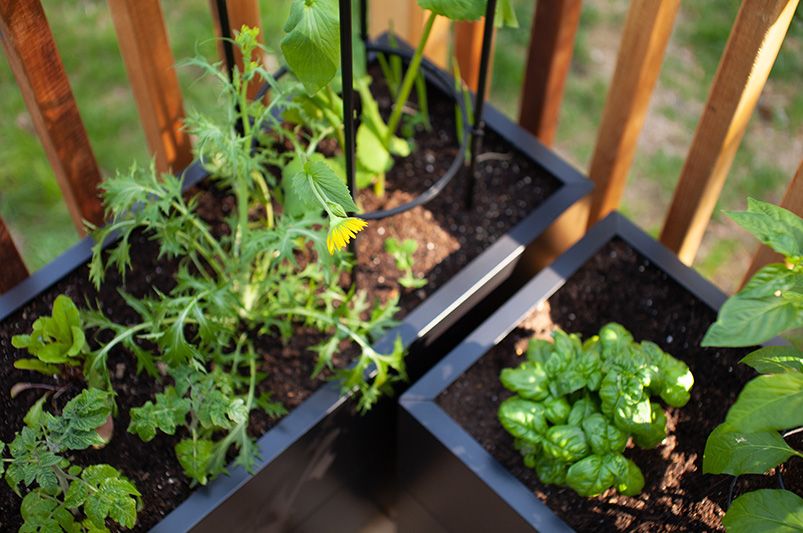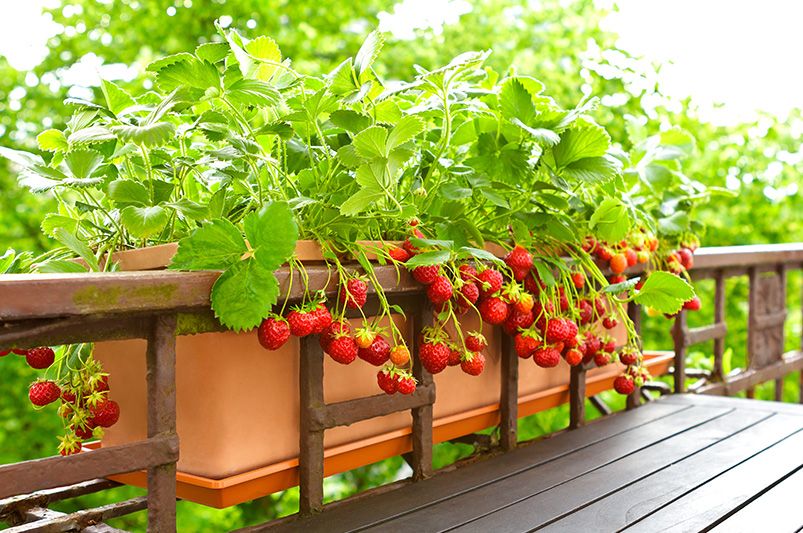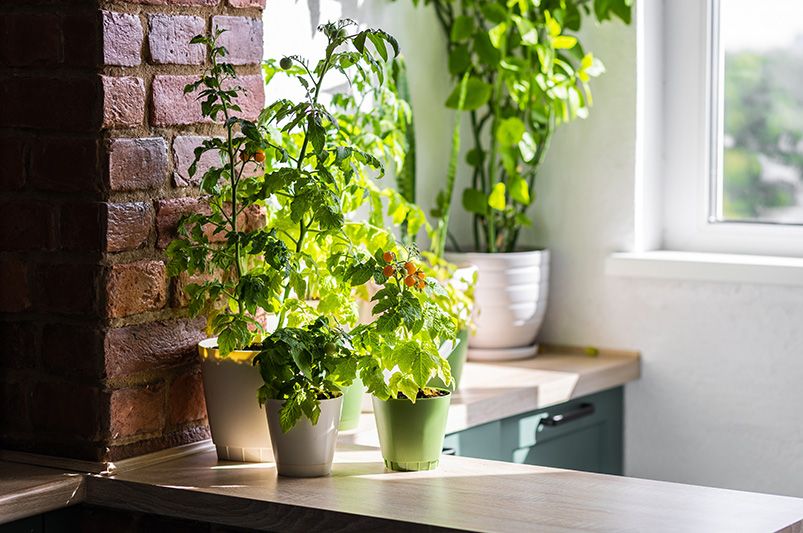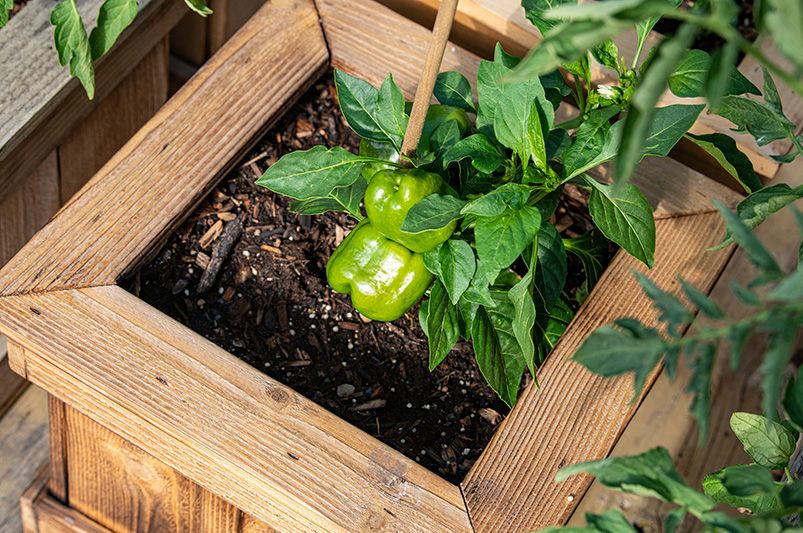
Master Container Gardening: Essential Tips for Success
Published: 07/10/2024 | Updated: 07/10/2024
Key Highlights
- Space-Saving Solution: Container gardening is perfect for urban dwellers or those with limited space, bringing the joys of gardening to balconies, patios, and decks.
- Versatile Gardening: Grow a wide variety of vegetables, herbs, and even small fruit trees in containers, customizing your garden to your preferences.
- Optimal Growing Conditions: Maintain greater control over soil quality, sunlight exposure, and watering frequency, leading to healthier plants and higher yields.
- Mobile Greenery: Easily move containers around to follow the sun, create attractive arrangements, or protect plants from harsh weather.
- Year-Round Enjoyment: Extend your gardening season by starting plants indoors, overwintering certain varieties, or growing cold-hardy crops.
Introduction
A container garden is a great option for city residents and people with little space who want to grow their own food. If you have a tiny patio or a bright balcony, you can create a lively garden filled with fresh herbs, colorful vegetables, and even small fruit trees. Learn the key tips and tricks to be successful in container gardening, no matter where you are.


Understanding Container Gardening

Container gardening means growing plants in containers rather than in garden beds. This method is very flexible, which makes it great for many people, especially those with small outdoor spaces.
You can grow everything from small herbs to large tomato plants in containers. This variety lets you make a garden that fits what you like to cook and the space you have. By learning the basics of container gardening, you will know how to take care of plants that are healthy and fruitful.
The Basics of Container Gardening
- Choosing the Right Potting Soil: Pick a lightweight potting soil that drains well. This type of soil is made for container gardening. It helps with air flow and stops the soil from getting too packed, so your plants can get oxygen and nutrients.
- The Importance of Good Drainage: Make sure your containers have holes at the bottom. These holes stop excess water from building up. Too much water can choke plant roots, causing root rot. Put a layer of pebbles or gravel at the bottom of the container to help drain water better.
- Watering Wisely: Good drainage is important, but container plants need regular watering, too. Containers can dry out faster than garden beds. Check the moisture often, especially when it’s hot. Water well when the top inch of soil is dry.
Benefits of Choosing Container Gardening
- Maximize Your Space: With container gardening, you can turn balconies, patios, and windowsills into useful gardens. Whether your balcony is small or your deck is big, you can have a great harvest by using containers of different sizes and shapes.
- Grow Many Types of Plants: You can grow compact leafy greens like spinach and lettuce or vining crops like cucumbers and green beans. There are many options for container gardening. Try different types to see what grows best in your area.
- Create a Flexible Garden: A big benefit of container gardening is that you can move your plants easily. You can follow the sun, make pretty arrangements, or protect your plants from bad weather by just moving your containers.
Getting Started with Container Gardening

Starting your container gardening journey begins with picking the right containers. You will also need to collect the tools and supplies you need. Finally, choose the plants you want to grow.
By thinking carefully about each part, you will prepare yourself for a successful and enjoyable gardening experience.
Choosing the Right Containers
Choosing the right containers is important for keeping your plants healthy and helping them grow well. Key factors include the material, size, and drainage of the containers.
Terracotta pots are great because they allow water to flow out easily. However, they need frequent watering. Plastic containers hold moisture better but require you to watch them closely to avoid overwatering.
The size of the container matters too. Small herbs can do well in small pots. But bigger plants, like tomatoes and peppers, need the space that large containers provide.
Essential Tools and Supplies
Getting the right tools and supplies makes container gardening easier. It helps you have what you need to care for your plants. You can visit your local garden center or look online to find what you need.
- Hand Trowel and Cultivator: These tools are great for planting, moving plants, and loosening soil.
- Watering Can or Hose with Nozzle: Pick a way to water that gives gentle, even moisture. This helps avoid soil loss and keeps plants safe.
- Fertilizer: Plants in containers need regular feeding because there are fewer nutrients in potting soil. Choose liquid fertilizer or slow-release granules to give them the nutrients they need.
Selecting Your Plants
Now, let’s talk about the fun part: picking the plants for your container garden! Think about your local weather, how much sunlight you get, and what you like when you choose.
You can go for nice-smelling herbs, bright vegetables, or pretty flowers. There is a perfect plant for your container garden just waiting for you to find it.
Best Plants for Container Gardening
- Tomatoes: These popular vegetables grow well in containers. They need plenty of sunlight and support. If you have smaller spaces, choose determinate types. For larger containers, go for indeterminate varieties.
- Peppers: You can grow sweet bell peppers and spicy chili peppers easily in containers. Make sure they get at least six hours of sunlight each day to produce the best fruit.
- Herbs: Herbs are a favorite in container gardening. They add flavor to your food and make your outdoor area look nice. Basil, mint, thyme, and rosemary are a few herbs that do well in containers.
Understanding Plant Needs
Before you start planting, it is important to know what your plants need. Understanding how much sunlight, water, and nutrients they require is key for keeping them healthy.
Most vegetable plants need full sun, which means they should get at least six hours of direct sunlight each day. Leafy greens, on the other hand, can do well in partial shade.
Look into the growing season for each type of plant. This will help you find the best times to plant and harvest them in your area.

Creating the Perfect Environment
Once you have picked your containers and plants, you need to set up the best growing environment. This includes preparing the soil and making sure the plants get enough sunlight and good airflow. Each of these parts is very important for your container garden to succeed.
By making conditions like those in nature, you give your plants the best chance to grow well and produce a large harvest.
Soil and Compost Basics
Using the right potting mix is very important for successful container gardening. Do not use garden soil. It can get compacted and may contain pests or diseases.
Choose a high-quality potting mix made for containers. These mixes often have ingredients like peat moss, vermiculite, and perlite. They are great for drainage and aeration.
By adding compost to your potting mix, you can provide nutrients and improve how well it holds water.
Lighting Conditions for Thriving Plants
Sunlight is very important for plants, and container gardens need it too. Most vegetables and flowers grow best in full sun. This means they need at least six hours of direct sunlight each day.
Place your containers in spots where they can get lots of sunlight all day. If you don’t have many sunny places, think about using reflective surfaces or choose plants that can grow in partial shade.
Keep an eye on how strong the sunlight is, especially in summer. Strong afternoon sun can harm delicate leaves. You might need to give them some shade during the hottest times of the day.
Step-by-Step Guide to Planting
Now that you know the basics of container gardening and have your supplies ready, it's time to start planting! Follow these simple steps for a smooth and successful planting process.
You will prepare your containers, then either sow seeds or transplant seedlings. Each step is important for making a healthy and productive container garden.
Step 1: Preparing Your Containers
Start by washing your containers well with soap and water. This removes any dirt or leftover bits from old plants. Keeping them clean helps stop the spread of disease.
Make sure your containers can drain water well to avoid water buildup. If the holes for drainage are too small, drill more holes. You can also add a layer of pebbles or gravel at the bottom of the container to improve drainage.
After your containers are clean and can drain properly, fill them with your potting mix. Leave about one to two inches of space from the top so you can water your plants easily.
Step 2: Planting Your Seeds or Seedlings
When you start with seeds or move seedlings, check the seed packet or plant tag for how far apart and how deep to plant them.
For seeds, plant them at the right depth and cover them gently with potting mix. Water them lightly so the seeds stay in place.
For seedlings, take them out of their small containers carefully. If the roots are circling, loosen them a bit. Plant them at the same depth as they were in the old containers and water them well.
Step 3: Positioning Your Containers
Once you have planted your containers, it's time to find a good spot for them. Think about how much sunlight each plant needs and group them accordingly.
Plants that grow well in full sun, like tomatoes, peppers, and most herbs, need at least six hours of direct sunlight every day. However, leafy greens can handle a bit of shade, especially when it's hottest during the day.
Remember, your full garden setup doesn't have to be in one place. You can spread the containers out on your patio, deck, or balcony. This helps you use space well and also makes a nice display.
Maintaining Your Container Garden

Congratulations on starting your container garden! Now, you have the fun job of taking care of your plants and watching them grow. It is important to water them regularly, feed them with fertilizer, and keep pests away.
If you give your plants the proper care they need, you will enjoy fresh, homegrown produce all through the growing season.
Watering Techniques for Success
Keeping your container plants moist is important for their health. But, getting the right amount of water and how often to water can be hard.
Overwatering is a common issue with container plants. This can happen if the soil drains poorly or if the containers don’t have holes for drainage. Watch your plants for signs of too much water. Look for wilting leaves, yellow leaves, or a bad smell from the soil.
Change how often you water based on the weather, what your plants need, and the size of the container. When it's hot and dry, you may need to water more often. Use your finger to feel the soil. If the top inch is dry, water it well.
Fertilizing Your Plants
Fertilizing your container plants is very important. This helps replace the nutrients that get used up quickly in a small space. When you fertilize regularly, your plants get the support they need. This helps them grow well and produce lots of fruits or flowers.
Pick a balanced fertilizer. It should have the main nutrients like nitrogen, phosphorus, and potassium, as well as micro-nutrients. You can use slow-release granules. They give out nutrients slowly over time. Liquid fertilizer can also be good when you want a fast nutrient boost.
Organic fertilizers are natural and friendly to the environment. You can use compost tea, worm castings, or fish emulsion. These are great for improving your potting mix with good microbes and nutrients.
Troubleshooting Common Issues
Even when you try your best, you might face some challenges in your container garden. Problems can happen, like pests or not enough nutrients. It is important to spot and fix these issues right away to keep your plants healthy.
Knowing the common problems in container gardening and how to solve them helps you act fast and effectively. This way, small issues do not become big problems.
Dealing with Pests and Diseases
Pests and diseases can grow fast in a small space like a container garden. It's important to check your plants often and act quickly to stop bigger problems.
You can use natural ways to control pests. For example, add helpful insects like ladybugs and lacewings. You can also spray insecticidal soap to keep pests away. Make sure to clear away dead leaves or waste that can attract pests or diseases.
Keep your plants healthy by giving them the right food, enough water, and plenty of sunlight. Strong and healthy plants can fight off pests and diseases better.
Addressing Over or Underwatering
Maintaining the right amount of moisture is very important for the health of container plants. If you water too much, it can cause serious problems, like root rot. This often happens because of bad drainage or too much watering. Plants that do not get enough water will wilt. You might notice dry soil and sluggish growth.
To see if your plants need water, put your finger about an inch into the potting mix. If it feels dry, water the plant well until you see water coming out of the drainage holes.
You might want to use self-watering containers. You can also add a water-retaining product to your potting mix. This will help keep the moisture levels balanced.
Enhancing Your Container Garden
Once you know the basics of container gardening, you can think about making your garden look and work better. You can add different decorations and change things with the seasons. There are countless ways to customize your space.
Let your creativity shine! Try different types of containers, mix various plants, and add fun decorations. This will help you create a beautiful and unique container garden!
Seasonal Adjustments for Year-Round Beauty
Container gardening helps you adjust to different seasons and enjoy gardening all year long. You can start plants inside and protect them from frost. Making seasonal changes can really help your garden grow better and last longer.
In the height of summer, give your plants shade during the hottest times. This helps to stop them from getting burnt and keeps the soil wet. Using organic mulch around your plants can keep the soil moist and stop weeds from growing.
If you live in a colder area, bring delicate plants inside. You can also cover them with blankets or cloches to protect them from frost. You can also try growing cold-hardy plants that can survive in cooler weather.
Incorporating Decorative Elements
While it is important to focus on how to grow plants in containers, adding pretty decorations can make your garden look much better. This will create a beautiful and inviting outside space. You can start by picking containers that look nice and adding fun accessories. Let your imagination lead you!
Try using different styles, colors, and textures for your containers. For instance, you could use a rustic window box full of colorful flowers. You might also choose sleek ceramic pots for fragrant herbs or reused containers set up as a vertical garden.
Make your garden more interesting by adding decorative pieces. You can use trellises for climbing plants, bright plant markers, or solar-powered lights to shine on your plants at night.
Conclusion
Container gardening is a great way to grow plants in any space. It is fun and rewarding. To succeed, you need to know a few basics about plant care. Choose the right containers and keep them well-maintained. Pick plants that fit your area. Make sure to water and fertilize them as needed. If you have problems, fix them quickly to keep your garden healthy. You can make your container garden even better by changing plants with the seasons and adding decorative touches. Enjoy the joy of gardening with these helpful tips for your container garden. Happy planting!
Frequently Asked Questions
What are the easiest plants to start with for beginners?
Beginners in container gardening can have a great time with easy plants. Good choices include leafy greens, herbs like mint and basil, cherry tomatoes, green beans, and green onions.
How often should I water my container garden?
Watering your plants depends on different things. This includes the moisture in the soil, the weather, and what the plants need. Usually, you should water thoroughly when the top inch of the soil feels dry. It is good to have a regular watering schedule, but you should change it if needed.
Can I reuse potting soil from one year to the next?
Reusing potting soil can be done, but it's not the best choice. It may hold pests or diseases. To make the soil better, you should mix in some compost and fresh potting mix. Keeping the soil clean and adding new materials are very important.
What should I do if my plants aren't thriving?
If your container plants are having a hard time, look for pests, diseases, or missing nutrients. Change how you care for them if you need to. Think about things like how much sun they get, how you water them, or if they need to be repotted.
Are there any plants that shouldn't be grown in containers?
Large trees, invasive plants, and some deep-rooted plants usually do not fit well in containers. This is because their growth can be limited and their roots could get harmed. The size of the container is very important.
Need Assistance for a Complete Landscape Makeover?
Shrubhub’s landscape design packages can significantly transform the lives of homeowners by delivering customized, professional landscaping plans tailored to their unique space and personal style. With the ease of online collaboration, you are guided step-by-step through a design process that fundamentally reshapes your outdoor environment. The result is an aesthetically pleasing and functional outdoor living area that maximizes the potential of your property.
Sign up now for free and get a whopping 70% discount on your landscape design!


